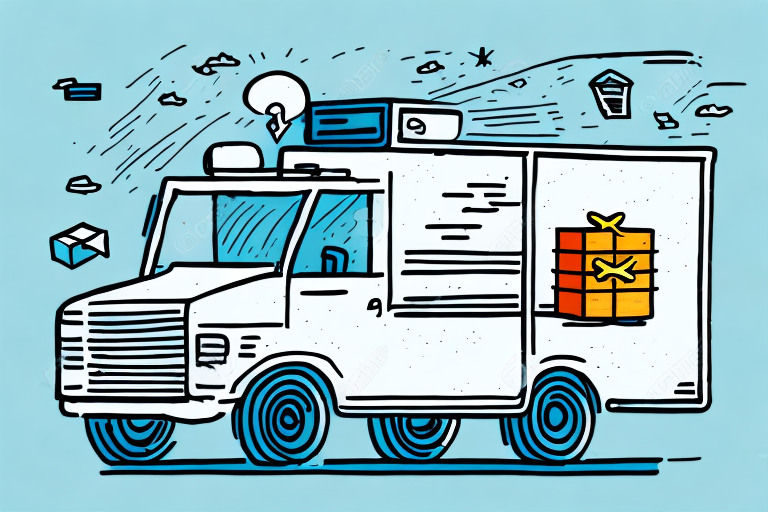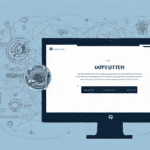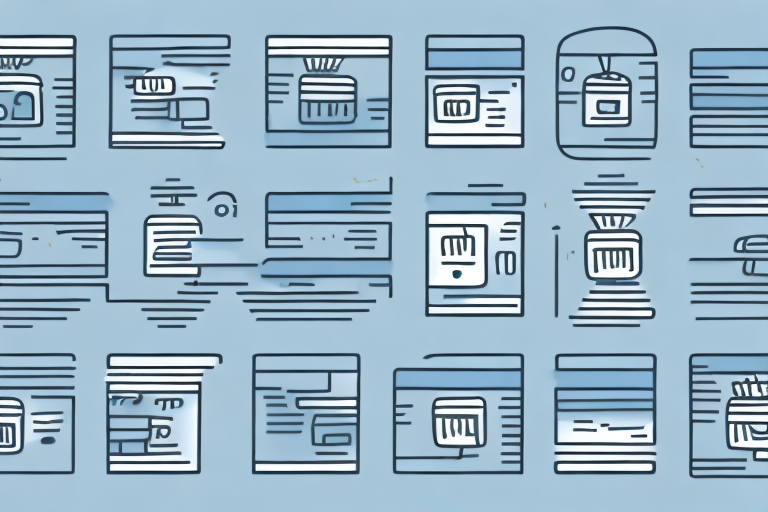Experience the Benefits of Quick Delivery Service
In today's fast-paced world, consumers demand swift and efficient delivery of goods. Quick delivery services have become a cornerstone of the e-commerce industry, offering substantial benefits to both businesses and customers. These services not only enhance customer satisfaction but also drive business growth and competitiveness.
The Role of Quick Delivery in the E-Commerce Industry
The e-commerce landscape has undergone a significant transformation, primarily driven by the demand for fast and reliable delivery options. According to a 2023 eMarketer report, global e-commerce sales are expected to reach $6.3 trillion, with quick delivery services playing a pivotal role in this growth.
Enhancing Customer Expectations
Consumers now expect their online purchases to arrive within days, if not hours. Quick delivery services meet these expectations by offering various delivery speeds, including same-day and next-day options, which are critical for customer satisfaction and retention.
Competitive Advantage
Businesses that offer faster delivery times gain a competitive edge. A Business Wire report highlights that companies with efficient delivery systems are 30% more likely to retain customers compared to those with slower services.
How Quick Delivery Can Improve Customer Satisfaction
Customer satisfaction is paramount in the highly competitive e-commerce sector. Quick delivery services significantly enhance the shopping experience by ensuring timely receipt of products.
Building Trust and Loyalty
When businesses consistently deliver products on time, it builds trust and fosters customer loyalty. According to a Forbes article, 88% of consumers are more likely to return to a retailer that offers fast delivery options.
Reducing Returns and Cancellations
Quick delivery reduces the likelihood of order cancellations and returns. Customers who receive their products promptly are less likely to change their minds, thereby minimizing return rates and associated costs.
The Impact of Quick Delivery on Business Sales and Revenue
Implementing quick delivery services can significantly boost a business's sales and revenue. Fast delivery options can influence purchasing decisions and increase the average order value.
Higher Conversion Rates
Shoppers are more inclined to complete purchases when they know their items will arrive quickly. A study by Shopify found that offering expedited shipping options can increase conversion rates by up to 20%.
Increased Average Order Value
Customers are more likely to add additional items to their cart when they anticipate fast delivery. This behavior can lead to higher average order values and, consequently, increased revenue.
Case Studies: Companies That Have Benefitted from Quick Delivery Service
Numerous companies have leveraged quick delivery services to enhance their market position and customer satisfaction.
Amazon Prime
Amazon's Prime service offers members benefits like free two-day shipping on millions of items. This service has been instrumental in boosting Amazon's customer loyalty and increasing its market share globally.
Zappos
Zappos provides free express shipping, ensuring customers receive their orders within a few days. This commitment to fast delivery has helped Zappos maintain high customer satisfaction and repeat business rates.
Walmart
Walmart offers free two-day shipping on a vast range of products without any membership fees. Additionally, their introduction of same-day grocery delivery has set a standard in the retail industry, allowing Walmart to compete effectively with online giants like Amazon.
Uber Eats
Uber Eats has revolutionized the food delivery market by ensuring that meals are delivered within minutes. Their efficient delivery system, combined with real-time tracking, has attracted a large customer base and driven significant growth.
Choosing the Right Quick Delivery Service for Your Business Needs
Selecting the appropriate quick delivery service is crucial for the success of your business. Several factors must be considered to ensure that the chosen service aligns with your business objectives and customer expectations.
Cost and Pricing Models
Evaluate the pricing structures of potential delivery service providers. Consider options such as flat-rate pricing, tiered pricing based on weight or distance, and any additional fees like fuel surcharges or insurance.
Reliability and Speed
Assess the reliability and delivery speed of the service provider. Look for companies with a proven track record of timely deliveries and minimal delays.
Coverage and Scalability
Ensure that the delivery service covers all the regions you operate in and can scale with your business as it grows. This includes the ability to handle peak periods and increased order volumes efficiently.
Real-Time Tracking and Customer Support
Opt for delivery services that offer real-time tracking and robust customer support. These features enhance transparency and allow both businesses and customers to monitor the delivery process effectively.
The Advantages of Implementing a Same-Day Delivery Option
Same-day delivery goes a step beyond quick delivery, offering immediate fulfillment of customer orders. This service is particularly beneficial for businesses that cater to urgent needs.
Meeting Urgent Customer Needs
Same-day delivery is essential for industries like food services, healthcare, and emergency supplies, where timely delivery can be critical.
Enhancing Competitive Edge
Offering same-day delivery differentiates your business from competitors. According to a McKinsey report, businesses providing same-day delivery see a 25% increase in customer retention rates.
Operational Efficiency and Cost Savings
Streamlining delivery processes for same-day service can lead to operational efficiencies and cost savings. Optimized routing and efficient resource management reduce delivery times and operational expenses.
Overcoming Common Challenges in Quick Delivery Service
While quick delivery services offer numerous benefits, businesses may encounter several challenges when implementing them.
Ensuring Timely Deliveries
Meeting delivery deadlines, especially during peak seasons, requires adequate resources and efficient logistics management. Investing in scalable delivery solutions and proactive planning can mitigate delays.
Managing Product Returns
Handling returns swiftly is essential to maintain customer satisfaction. Implementing streamlined return processes and clear policies can help manage returns effectively.
Maintaining Product Quality
Ensuring that products remain undamaged during transit is crucial. Investing in appropriate packaging materials and handling procedures can prevent product damage and preserve quality.
Cost Management
Balancing the costs associated with quick delivery services is vital for profitability. Regularly analyzing delivery expenses and optimizing pricing strategies can help maintain cost-effectiveness.
The Future of Quick Delivery Technology and Innovation
The quick delivery industry is rapidly evolving, driven by technological advancements and innovative solutions.
Autonomous Vehicles and Drones
Companies like Amazon and UPS are piloting autonomous delivery vehicles and drones to enhance delivery speed and reduce costs. These technologies promise faster and more efficient delivery options in urban and remote areas.
Artificial Intelligence and Machine Learning
AI and machine learning are revolutionizing route optimization, demand forecasting, and inventory management. These technologies enable delivery services to predict and respond to customer needs more effectively.
Smart Warehousing and Robotics
Robotic automation in warehouses streamlines order fulfillment processes, reducing processing times and minimizing human error. Smart warehousing solutions enhance the overall efficiency of the delivery pipeline.
Underground and Aerial Tunnel Systems
Innovative delivery methods, such as underground tunnels and aerial drone networks, are being explored to bypass traffic congestion and further speed up delivery times.
Understanding the Cost and Pricing Models of Quick Delivery Services
Quick delivery services offer various pricing models to accommodate different business needs and budgets.
Flat-Rate Pricing
Flat-rate pricing involves a fixed fee per delivery, regardless of distance or package size. This model simplifies budgeting and is suitable for businesses with consistent delivery volumes.
Tiered Pricing
Tiered pricing adjusts based on factors like weight, distance, and delivery speed. This model offers flexibility and allows businesses to pay for the level of service they require.
Subscription-Based Models
Some delivery services offer subscription plans that provide discounted rates or additional benefits for a recurring fee. This can be cost-effective for businesses with regular delivery needs.
Additional Fees
Consider potential extra costs such as fuel surcharges, insurance, and handling fees. Understanding these additional expenses is crucial for accurate cost calculations and pricing strategies.
In conclusion, quick delivery services are indispensable in the modern e-commerce landscape. They enhance customer satisfaction, drive sales, and provide a competitive edge. By carefully selecting the right delivery partner and leveraging technological innovations, businesses can maximize the benefits of quick delivery services and ensure sustained growth and success.




















